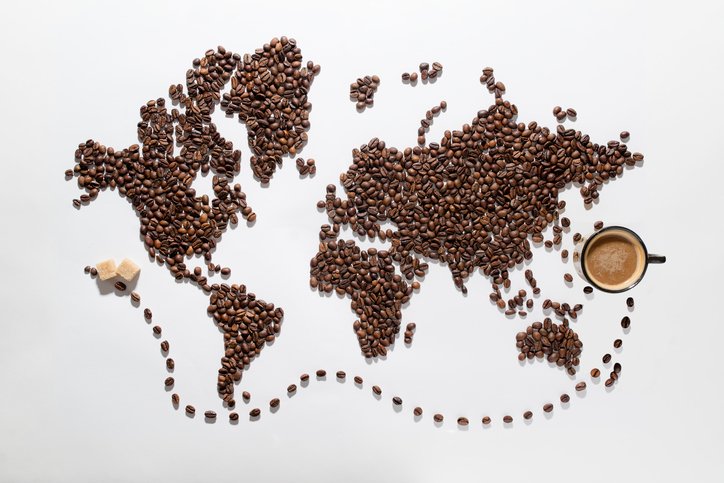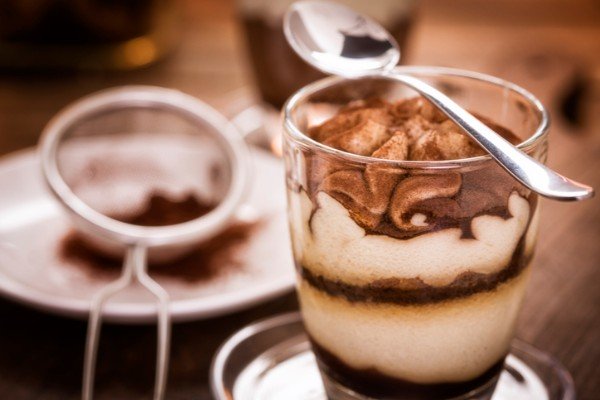Have you caught up with friends for coffee lately? Coffee is the crazy little bean that transforms our mornings and gives us common ground(s) in a world full of rifts. This month, Lantern Club is doing a buy three, get another free on any hot beverage and cake combo. There’s no denying this drink’s popularity but as well as bringing Australians such joy on a daily basis, it plays a role in cultures around the world. Take a look at how people drink coffee from Vietnam to Venice, then check out five tantalising international coffee recipes.
Coffee: The early days
The origin of this energetic little drink is somewhat mysterious. Many stories exist about how humans developed their addiction to its stimulating effects.
A popular myth stemming from Ethiopia states that a goatherd named Kaldi saw his goats become hyperactive after eating berries from a bush. He shared his discovery with the head of the local monastery, who began using the berries to remain awake during evening prayer.
In a similar fashion, the origin of modern roasted coffee is believed by many to be the Middle East, where the resulting drink was used to fuel Muslims during long prayer sessions.
The introduction of coffee to Europe in the 17th century created religious controversy and was seen by some as “the drink of Satan”. Despite (or perhaps because of) this, the beverage quickly gained popularity and began being used as a replacement for beer or wine during breakfast.
Eventually, coffee received the support of the Pope, instigating a free for all. The revitalising effects of this heavenly brew became recognised for increased efficiency in everyday work. Coffeehouses soon became popular places to socialise and indulge in sophisticated conversation.
As well as delivering that morning buzz, coffee can lay claim to triggering both the American and French Revolutions. These were planned out in coffeehouses, fuelled by rebels on a caffeine high. While staying awake to commune with God is perhaps a more noble origin story for coffee, it is the European traditions of café society that inform western coffee drinking culture to this day.
Coffee Drinking Countries
Yes, Australia has a consistent love affair with coffee but according to the International Coffee Organisation (ICO), Finland has the highest coffee consumption rate in the world, with the average individual consuming a whopping 12.2kg of dry coffee beans each year. Neighbouring Scandinavian countries join Finland in having the highest consumption rates in the world. Others that make the top 20 include Belgium, Netherlands, Canada, Brazil, Germany, Bosnia Herzegovina, Croatia, and Cyprus.
Australia, by comparison, consumes a rather modest 3.97 kg per capita per year. We import 1.19 million 60kg bags of green coffee every twelve months, ready for roasting to perfection.
Interestingly, if you do an online search for “countries that don’t drink coffee”, you will only see pages about countries that drink the most coffee. Even Google doesn’t understand what a land without coffee means! Whether consumed in high amounts or not, coffee is a global standard. We all love that little kick to get us through the day.
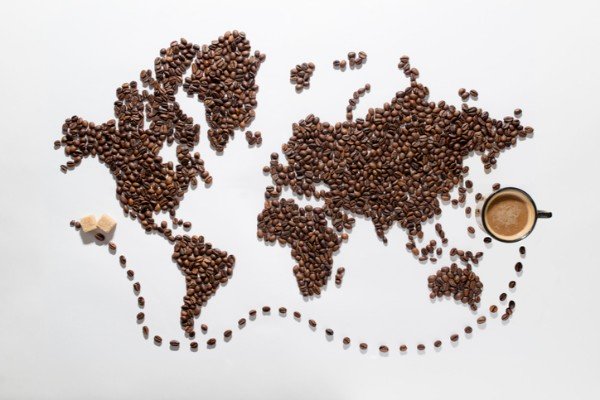
That caffeine high
Why do we love coffee so much? There are quite a few reasons.
Although an overconsumption of coffee may result in the jitters, there are many studies linking our java consumption (within reason) to health benefits. This includes a reduction in the development of diabetes, liver disease, and even Alzheimer’s disease.
To get scientific, caffeine improves physical and mental performance because it stimulates the central nervous system and attaches to adenosine receptors in the brain. The job of adenosine is to tell us when to rest, so when caffeine attaches to and blocks its receptors, the brain receives no such signal and remains alert. Woohoo!
What’s more, caffeine increases your brain’s production of one of the ‘feel-good’ neurotransmitters known as dopamine. This results in what’s known as the ‘coffee high’.
As well as making you feel happy and alert, that morning hit may also be giving your body a better chance at fighting disease. Coffee contains large amounts of antioxidants, which help combat free radicals in the body. So have another cup; after all, it’s doing you good!
It is heartening to think of the many million brews being served in so many ways around the world each day. So long as you take the drink in moderation (around four medium-strong cups per day seems to be the tipping point where consumption is deemed excessive), it can do good things for your health.
As described by the Turkish proverb, one of the most important things about coffee is not the energy it stimulates, but the togetherness, the moments shared and the conversation. Coffee gives you reason to take a moment, draw breath and connect with others. It’s no wonder each cup is held dear by billions the world over.

Coffee around the world
While we all love our cuppa, different countries and cultures have their unique ways of preparing it.
Coffee in Turkey
In Turkey, coffee is specially brewed using a boiling pot (cezve) and coffee cup (fincan). Beans are freshly roasted and very finely ground. The coffee is boiled slowly in the cezve until the surface becomes foamy and the beverage is then served, grounds and all, with a glass of water and a piece of Turkish delight on the side. After finishing a cup, there is a special ritual of telling fortunes from the powdery residue left in the fincan.
This traditional way of making and serving coffee is passed down from generation to generation and is integral to Turkish social life. A delightful local proverb translates to; “Souls are after neither coffee nor coffeehouses; they are after close companionship; coffee is an excuse.”
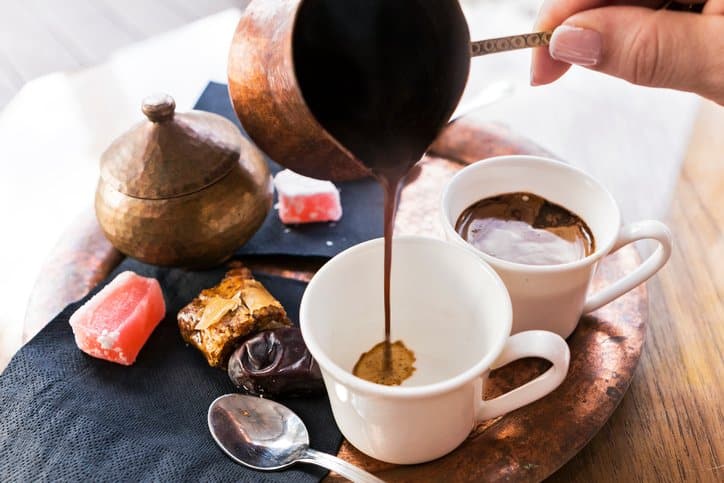
Coffee in Brazil
In Brazil, the mainstay of coffee culture is Cafezinho, translated as ‘little coffee’. This is black and sweet, made with a cloth coffee strainer. Being greeted with “Você quer cafezinho?” on arrival wherever you go in Brazil is a common sign of hospitality. Brazilians consume their cafezhino in small cups whenever they have a break and the drink is often offered free with meals or as an extra service in stores.
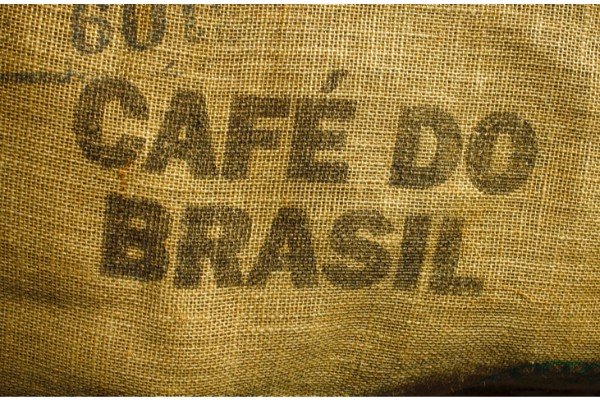
Coffee in America
A cup of joe was thrust upon the USA after the Boston Tea Party. In December 1773, civilians dumped a shipment of tea in Boston Harbor as a protest against overpriced taxes. From that day, tea was considered unpatriotic in the new world and coffee was the beverage of choice. From the 1950’s, drip coffee became the easy and natural norm. Drip filters are a common staple of home, office and diner alike, so much so that many American households don’t own a kettle.
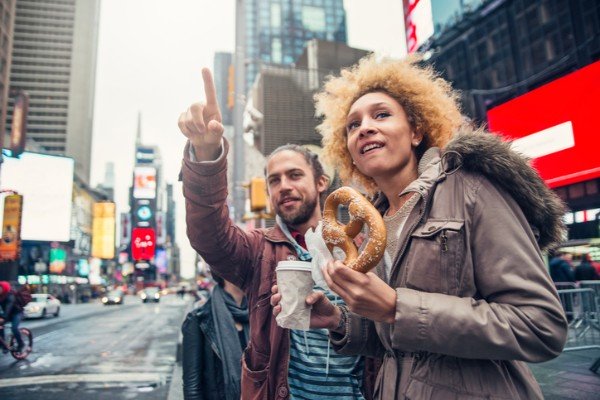
Coffee in Japan
Japan, the king of quirk, was a latecomer to the coffee craze. While it is common today to see Starbucks and other coffee chains in Japan, you will find locals and traditionalists in an underground of specialty shops called ‘kissaten’. Here, coffee making is an art form practised and perfected by artisans. The Japanese also invented the much-lauded cold brew, which was first made in Japan in the 1600s.

Coffee in Italy
Italy is perhaps what most of us think of as the birthplace of coffee, but more accurately it is the birthplace of the espresso. This quick and dirty coffee is made by pushing water through tightly packed and finely ground coffee at high pressure, expressing a smooth and strong shot with a fine foam on top known as ‘crema’. Coffee made this way is downed with gusto, often with the customer remaining standing and chatting with the barista.
Many Italians prefer the supposedly superior taste of espresso in a glass and enjoy taking one as a nightcap (which demonstrates their legendary tolerance for caffeine).
Adding foamy milk to the espresso creates a host of variations, including the macchiato (espresso with a dollop of foamed milk) and the cappuccino (the name comes from its similarity in colour to the robes of Capuchin monks).
Italians might not have invented coffee, but they certainly made it their own. If you’re thinking of travelling to Italy, take note that it is almost sacrilegious to drink a cappuccino in the afternoon (or any time after 11am). After this time of day, if you’re looking for a more dessert-like spin to your coffee, order a Granita de Caffé (espresso and sugar frozen into icy granules and topped with cream).
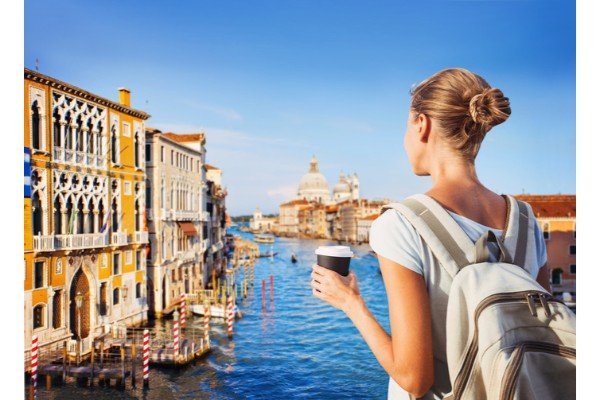
Coffee in Vietnam
Another interesting contributor to coffee culture is Vietnam. Relatively low profile on the coffee scene, this nation mostly grows Robusta beans, which are seen by many as inferior to Arabica beans. Coffee was introduced to Vietnam by the French in the 1800s and at that time fresh milk was hard to come by. The solution… condensed milk!
To make coffee the Vietnamese way, a special metal filter with coarse coffee grounds is placed over a cup. Water is poured over the grounds and filters through, creating a Vietnamese-style espresso shot. Condensed milk can be added on its own or blended with non-acidic fruit, avocado, coconut or raw egg. Unusual, for sure, but it has been reported that the raw egg variety tastes similar to a caffeinated Cadbury cream egg! In Vietnam, the original condensed milk coffee is called Cà Phê Sữa.
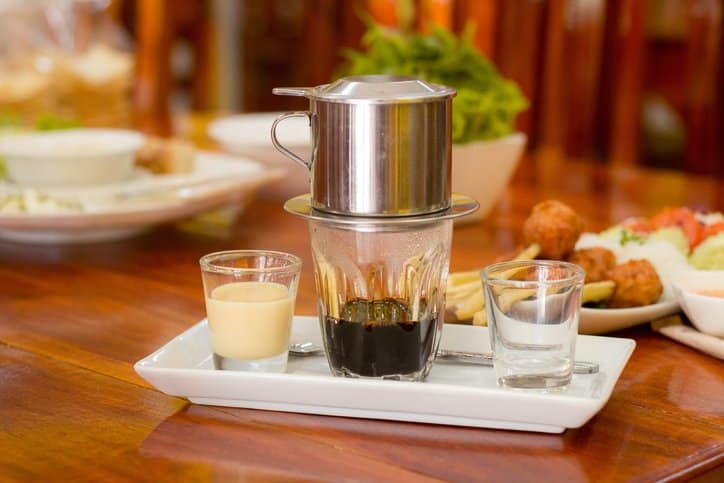
Coffee in France
Much of the coffee language we know comes from France so it’s no surprise the French consume coffee on a regular basis.
The word café is actually French for coffee, so ordering one coffee is simply asking for “un café”. A standard ‘café’ in a, uh, cafe is either served with two pieces of sugar on the side or sugar is available behind the counter. Cream or milk is also usually available, but it’s much less popular and typically not as thick as the half-and-half that Americans dollop in coffee.
American style coffees are available throughout France though. Known as “un café Américan”, which could either be what Starbucks call an Americano (espresso diluted with water and ice or a café filtré) like you see in the roadhouse diners in the US.
A “café au lait” is literally a “coffee with milk” which we Australians tend to love. It’s quite popular in the morning alongside breakfast and it’s rare to have a milky coffee in the afternoon or evening.
But coffee of some variety is an any-time-of day and morning, afternoon or evening drink. Some will opt for a decaf.
A coffee in France is usually complimented by food. The French will often have a croissant or baguette with their cafés and the old dip in a café is very common. Cafés can also serve as the final course for a meal, often served after a dessert of cheese.
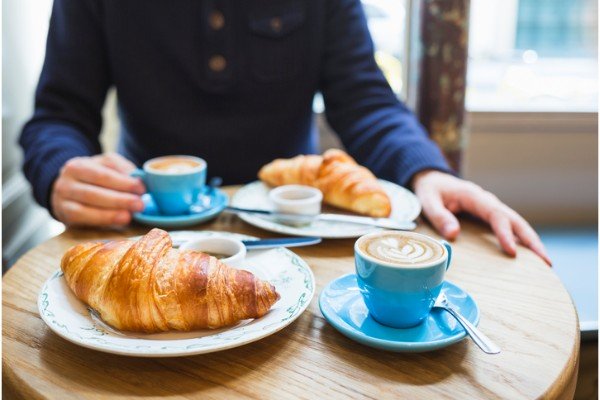
Coffee in Greece
Just like the Italians on the other side of the Ionian sea, Greece consume coffee on a regular basis and the country is littered with local cafés. Cafes in Greece can take two forms, one is a cafeteria which is a quite trendy and popular hangout for Greeks, especially for the younger folk. As you picture pristine water, a coffee in a cafeteria can be in the same photograph as during spring and summer most kafeterias provide outdoor tables. Some will transform into a bar at night. A kafeteria usually offers many types of coffees, other beverages and snacks.
Older Greeks, especially men, are more likely to be seen at a kafeneio. This is the old traditional café that for decades has been the meeting point of the elderly men in every village or town much like a local club or pub in Australia. Although it’s predominantly been male dominated, everyone is welcomed and treated courteously.
The traditional Greek coffee consumed is known as “ellinikós kafés” which is a brew similar in consistency to instant coffee and is actually a version of the Turkish coffee. This made its way to Greece during the Ottoman occupation in the 16th century. It is a thick, strong, black coffee prepared in a special small pot called a “briki” and served with a unique foam on top and the grounds in the bottom of a small cup. Unlike Italians who love consuming their coffee quickly, the Greeks take their time with their petit coffees.
Also similar to Turkish coffee culture, after finishing your cup of coffee in Greece you have to revolve the cup so that the sediment covers all of the inside area. You then place the saucer on top of the cup. Someone else has to peer into your cup and interpret the shapes and from the chalky residue to tell your fortune. There are other superstitions around Greek coffee consumption. One is spilling a little out of the cup can bring luck and money. Also, if your cup of coffee has a big bubble, it can mean disappointment or some believe it means that a good friend will arrive soon (can it be both if it’s a friend who is a bit of a pest?). A cup of coffee is also supposed to predict the weather. If bubbles gather in the middle of the cup’s surface, then the weather should be nice and sunny. If bubbles form around the outside of the cup, the weather will change to rain or snow. Like most superstitions, there is an actual scientific explanation. High atmospheric pressure, which usually comes on clear days, forces the bubbles on the surface to go to the centre of the cup. At low pressure, which usually means bad weather is coming, the bubbles burst to the outside of the cup.
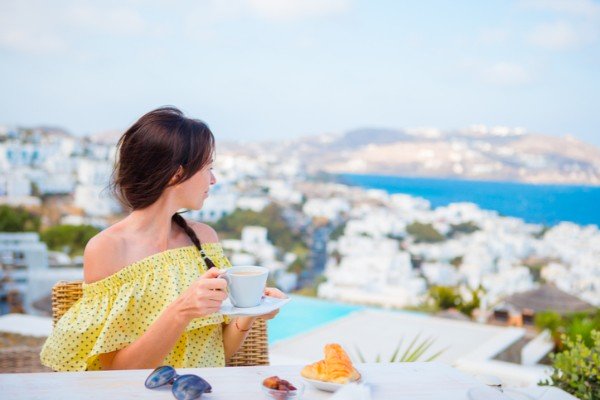
Coffee in Ireland
The Irish have been long known for their beer consuming culture rather than coffee, but the tide definitely is turning there. Cafes much like those seen in other European countries (and Australia) are becoming much more common. Ordering a cappuccino was something you’d do on holiday in Italy. Much like Australia, the Irish are turning away from the instant type and it’s estimated that one in three people buy a coffee from a café at least once a day.
The Irish however still don’t mind a little nip of whiskey in a coffee every now and then.
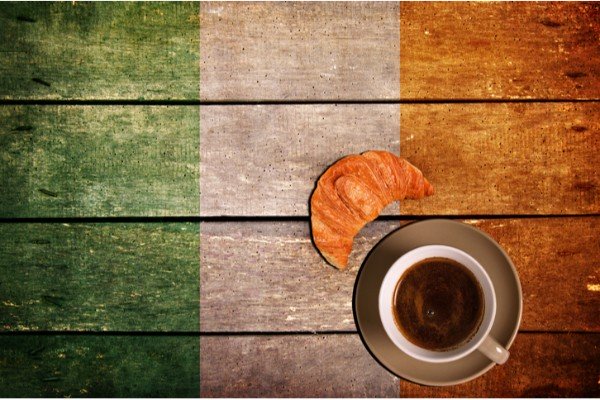
Coffee in China
While the Chinese have long been known for their love of teas, western style coffee is fast becoming popular in China especially among younger people. Coffee consumption has increased in China by about 400% since 2004. Starbucks cafes are popping up all over their big cities.
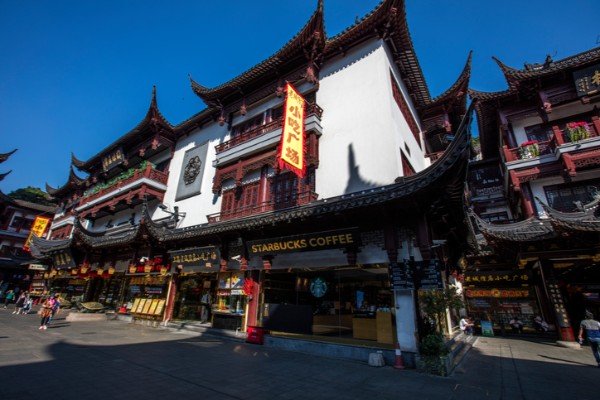
Coffee in Finland
Per person, Finland is in fact the largest consumer of coffee with about 12kg of the brown stuff being consumed per person per year! It could be partly due to it being so damn cold in the north of Europe. Whether it is outdoors or indoors, a Finn will rarely be far from coffee. In fact it’s a legal requirement that they get two 10 minute coffee breaks in a work day! But despite their huge coffee consumption, franchises like Starbucks are hard to find outside of Helsinki.
Coffee in Finland is almost always served with cake. There is even a word in Finnish, kakkukahvi, which means “coffee and cake”. A type of sweet bun topped with vanilla icing known as pulla is a particularly popular accompaniment with coffee. Also, most meals sold in restaurants come with a free cup of coffee.
In Finland, they have a custom called santsikuppi, which means that in many places when you buy a cup of coffee, a second fill is free. Finns have always been overly keen for coffee. During World War II, coffee was regulated and for a while wasn’t available at all. But the crafty Finns decided to make a coffee substitute made from grain, pine bark, sugar beet, potato peel or beetroot. It probably sounds more like a stew than coffee. So upon the arrival of the first shipment of coffee after the war in 1946, a huge gathering happened in the Turku Harbour. You could’ve sworn the Beatles were aboard the ship Herakles which was famously full of long awaited coffee beans.
While most English speaking countries have various drink types for each occasion (for example, Aussies love a coffee in the morning, a beer in the afternoon and a tea at night), Finns believe everything is good with coffee. When a baby is born, graduations, birthdays, Christmas, weddings. It’s always coffee time. Kids play with pretend tea sets and they have an imaginary coffee machine. At night, Finns will have a de-caffeinated coffee before bed. Then they wake up and start their coffee consumption all over again.
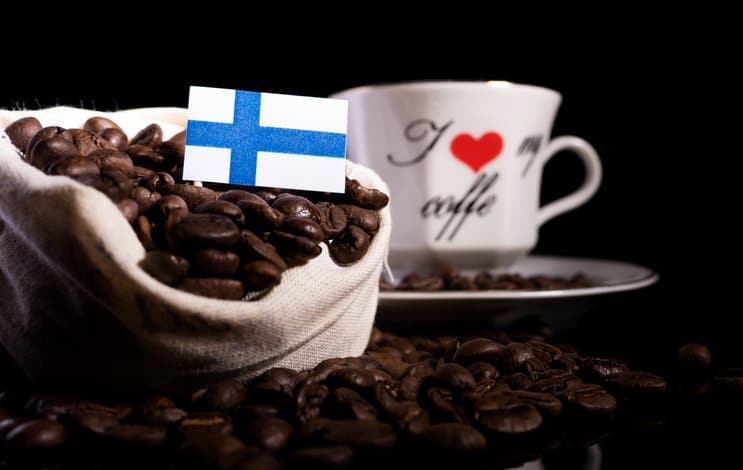
Coffee in Sweden
The Swedish are know for their fine chocolate, watches, cheese and of course coffee. The life of a Swede revolves around a coffee. In Swedish, a coffee break is frequent and known as fika. This can be used as both a verb and a noun for the time of day that they sit down to enjoy a cup of coffee. It’s usually accompanied by a baked good. Fika is usually done with associates but can also be done solo. While we call them break or staff rooms at workplaces, Swedes call it the “fika room” where they gather for their compulsory fika break.
Swedes mostly love a classic, black, drip coffee but also don’t mind consuming a kokkaffe or boiled coffee which is made the same way you would brew a tea in a teapot in Australia. With the cold weather, a coffee pot on an open fire is a great custom when visiting Sweden.
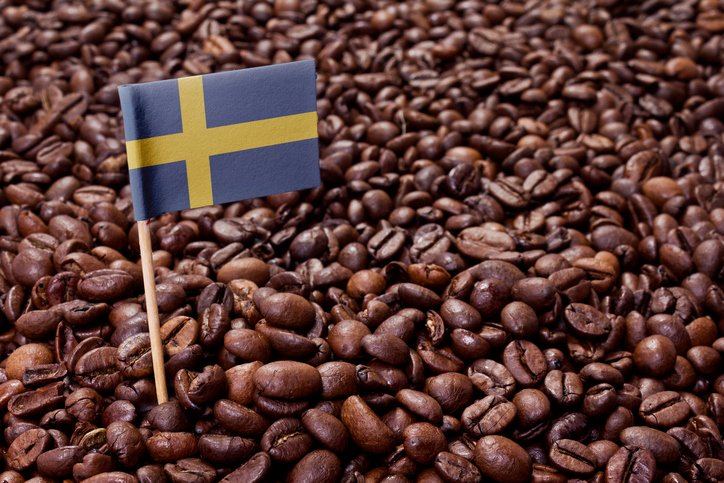
Is your mouth watering?
Here are some simple and satisfying international coffee recipes that will satisfy any coffee connoisseur.
Easy Tiramisu from Italy
An easy take on an Italian mainstay, adapted from biggerbolderbaking.com
Ingredients:
1 cup heavy whipping cream
1 cup mascarpone cheese, room temperature
1/3 cup sugar
1 teaspoon vanilla extract
1 tablespoon Amaretto and brandy (optional but yummy!)
2 cups espresso or stribg room temperature coffee
1 Lady Fingers biscuits packet (preferably Savoiardi)
Cocoa powder for top
Instructions:
-
- Whisk whipping cream, sugar and vanilla into soft peaks
- Add mascarpone and Amaretto and mix until stiff peaks form and texture is unvaried
- Dip biscuits in coffee and brandy. Don’t let them soak as they will get soggy and fall apart. Just a quick dip
- Place the biscuits in an 8 x 8 pan for the first layer
- Spread half the whipped cream mixture on top of first biscuit layer
- Repeat steps 3-5 for the second layer
- Sift the cocoa powder over the top and place in the frier for 2-4 hours
- Serve with love!
Café de Olla from Mexico
Adapted from Latina.com, this is sweet enough not to need milk when served.
Ingredients:
3 cups water
4 cinnamon sticks, halved lengthwise
3 ½ tablespoon brown sugar
3tablespoon ground coffee (preferably latin blend)
Cinnamon sticks for garnish
Instructions:
- Mix cinnamon sticks and water in a pot and bring to boil on high heat. Then reduce to a simmer for 3-4 minutes
- Stir in sugar until dissolved
- Bring mixture to a boil
- Stir in coffee grounds and simmer for 1 minute
- Remove from heat and let it steep for 2-3 minutes
- Strain and serve with a fresh cinnamon stick.
Malteada de Café from Colombia
Adapted from: Latina.com, this recipe makes 1 serve.
Ingredients:
2 cups cold coffee
2 spoons of ice cream (vanilla)
½ cup of milk
Optional chocolate sauce
Instructions:
- Blend all ingredients until you have a smooth mixture, then top with chocolate sauce
- Drink up.
Too easy!
Indian Banana & Coffee Lassi Smoothie
This recipe is adapted from rossocaffe.com and serves 1.
Ingredients:
1 shot espresso (or strong coffee) chilled
2 bananas, chopped and frozen for 1-2 hours
½ cup plain yoghurt
1 teaspoon honey
1 pinch of cinnamon
Instructions:
- Blend all ingredients and top with ground almonds or chocolate flakes.
- Consume with a friend to make it a little less naughty in the calorie department
Viennese Coffee Balls
This recipe is adapted from geniuskitchen.com and makes approx. 30 balls
Ingredients:
2 cups crushed shortbread cookies
1 1/4 cups plus ½ a cup sifted powdered sugar
1 cup finely chopped nuts
2 tablespoons unsweetened cocoa powder
1 1/2 teaspoons instant coffee or instant espresso powder
3/4 teaspoon ground cinnamon
4 – 5 tablespoons brewed espresso, strong coffee, or water
Instructions:
- In a large bowl, mix crushed cookies, powdered sugar, nuts, cocoa powder, instant coffee and cinnamon.
- Add only enough brewed espresso, coffee or water to moisten the dry ingredients.
- Roll mixture into 1 inch balls, then coat in the remaining powdered sugar.
- Place on a sheet of waxed paper and let stand until dry (about 1 hour).
- in a tightly covered container at room temperature for up to 3 days. Before serving, roll again in powdered sugar, if desired.
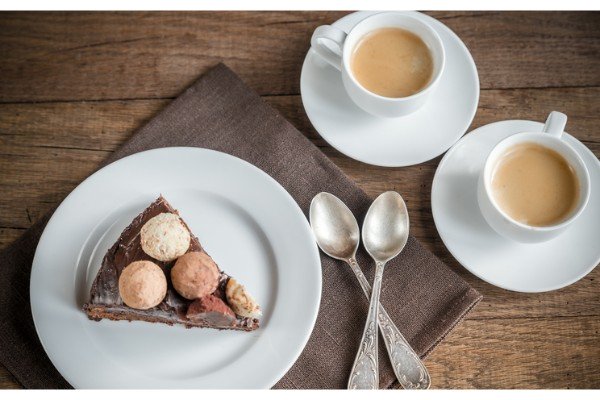
Have world-class coffee right here in Sydney
As an avid coffee drinker, it is heartening to think of the many million brews being served in so many ways around the world each day. So long as you take the drink in moderation (around four medium-strong cups per day seems to be the tipping point where consumption is deemed excessive), it can do good things for your health.
As described by the Turkish proverb, one of the most important things about coffee is not the energy it stimulates, but the togetherness, the moments shared and the conversation. Coffee gives you reason to take a moment, draw breath and connect with others. Its no wonder each cup is held dear by billions the world over.
If you want to knock back a world class coffee without having to go via an airport, visit Lantern Club in Roselands. This month, Lantern Club is doing a buy three, get another free on any hot beverage and cake combo. We’ll serve you up an amazing cafe experience with the finest beans from ONA Coffee Our team of baristas are committed to achieving the perfect brew with every cup of coffee they pour. To find us, click here. To see the terms and conditions of our hot beverage and cake combo, click here.

